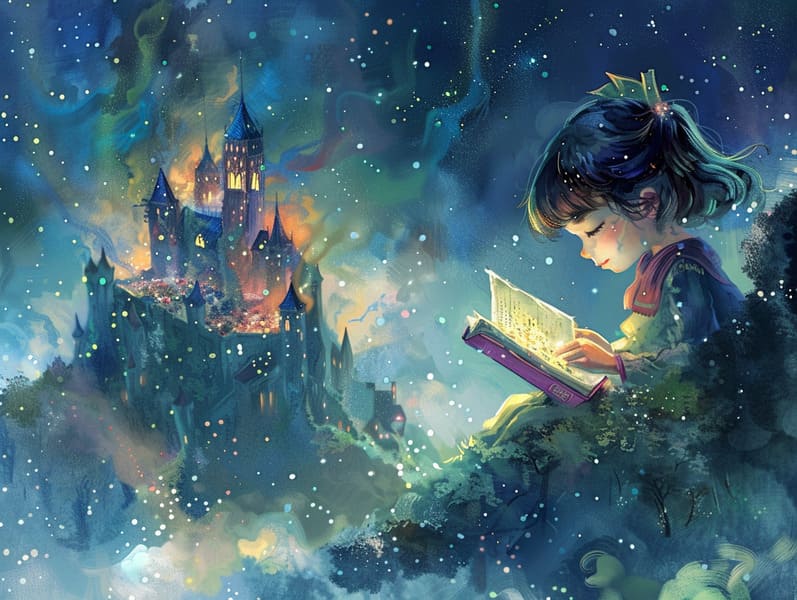The Dawn of Fairy Tales and the Unchanging Delight.
The Dawn of Fairy Tales and the Unchanging Delight.
Blog Article

Famous fairy tales have ancient roots. These narratives have been shared from one generation to the next well before they were ever put on paper. They developed from a variety of traditions, including African traditions. They were initially passed along among elders, often carrying themes and messages concerning the societal norms and beliefs of the time.
The famous Grimm duo, Jacob and Wilhelm, were among the first to gather many of these beloved stories. Their anthology, "Grimm's Children's Stories," included tales like "Cinderella," "The Bread Crumb Trail," and "Little Snow White," which have since become mainstays in the world of iconic fairy tales. Similarly, Hans Christian Andersen's charming tales, such as "The Sea Maid," and "The Duckling's Story," have captivated hearts worldwide, securing their place in the pantheon of treasured fairy tales.
Despite being ancient, these stories remain as significant as ever, especially as kids' bedtime tales. These enchanting tales are now available in multiple formats, including richly illustrated books, delightful animations, and web-based fairy tales.
Their lasting appeal can be attributed to several fascinating points:
Valuable Lessons: Classic fairy tales often impart important moral lessons. Narratives like "The Boy Who Cried Wolf" teach the significance of honesty, while "The Hare and the Tortoise" emphasize the values of tenacity and meekness. These narratives offer the young clear distinctions between right and wrong, shaping their moral compass in a soft yet profound way.
Compassion and Knowledge: Classic fairy tales frequently illustrate beings facing challenges and problems, fostering kids to identify with their struggles and applaud their triumphs. For instance, "The Story of Beauty and the Beast" highlights the merit of looking past the exterior to realize the inner being of a person, advancing kindness and perception.
Cultural Perception: Many old fairy tales are imbued with the cultural contexts from which they bloomed. Understanding these narratives can provide informative snapshots into different social structures, nurturing a sense of cultural respect and respect.
Creativity and Fantasy: The fanciful elements in fairy tales—wizardry and magic—ignite children’s visions. These fairy tales take readers to extraordinary realms, awakening innovative thinking and a sense of amazement that persists a lifetime.
Ancient fairy tales are not only charming but also teaching. They serve as whimsical tools in fostering various mind and heart abilities in little ones. When old fairy tales are told out loud, they promote language acquisition by presenting new phrases and detailed sentence structures. This practice also develops hearing perception and attention, as the young pay close attention, looking forward to see what happens next.
Furthermore, exploring the themes and characters of old fairy tales can advance thinking skills and thought processes. Young readers are shown to identify patterns, make predictions, and figure out cause and effect. These explorations also facilitate the young verbalize their thoughts and feelings, contributing to their emotional intelligence.
In today’s cyber age, the availability of online storybooks has made these stories more within reach than ever. Digital sites and applications share extensive collections of popular fairy tales that can be accessed or heard anytime, anywhere. Fairy tales narrated are particularly popular, supplying an engaging way for the young to immerse in these spellbinding stories. Sound books and read-to-me videos transport characters and settings to life, often paired with fantastical background sounds and melodies that intensify the story adventure.
The timeless allure of classic fairy tales lies in their ability to change to modern society while keeping hold get more info of their basic principles. Contemporary versions of these fairy tales often introduce more representative protagonists and modern settings, making them accessible to today’s audience. However, the basic principles of guts, empathy, and rightness remain unchanged, continuing to affect listeners of all ages.
Ancient fairy tales also offer a sense of security and familiarity. They afford a well-ordered narrative with a obvious beginning, middle, and end, often wrapping up with the conclusion of conflicts and the triumph of righteousness over wickedness. This consistency can be soothing for young ones, affording a sense of invariability in an inconstant world.
Old fairy tales continue to fascinate and coach new generations, maintaining their attraction and significance in modern society. As children's bedtime stories, they bequeath a perfect blend of fantasy and learning, boosting moral values, empathy, and creativity. The existence of web-based fairy tales and the well-liked nature of fairy tales read aloud assure that these ancient fairy tales remain reachable to new generations.
By holding onto and circulating these fairy tales, we continue to glorify the rich tapestry of lore and cultural heritage. Whether you are accessing a gorgeously illustrated book, enjoying a digital collection, or listening through an read-aloud book, the spell of Grimm's fairy tales is always within reach. These stories convey of the eternal spell of stories and its ability to unify us across centuries and lands.
Even if you are seeing a vibrantly illustrated book, browsing a electronic collection, or listening through an voice book, the captivation of famous fairy tales is always within reach.
These narratives illustrate of the consistent essence of stories and its ability to gather us across epochs and places, weaving a spell that charms and informs alike.